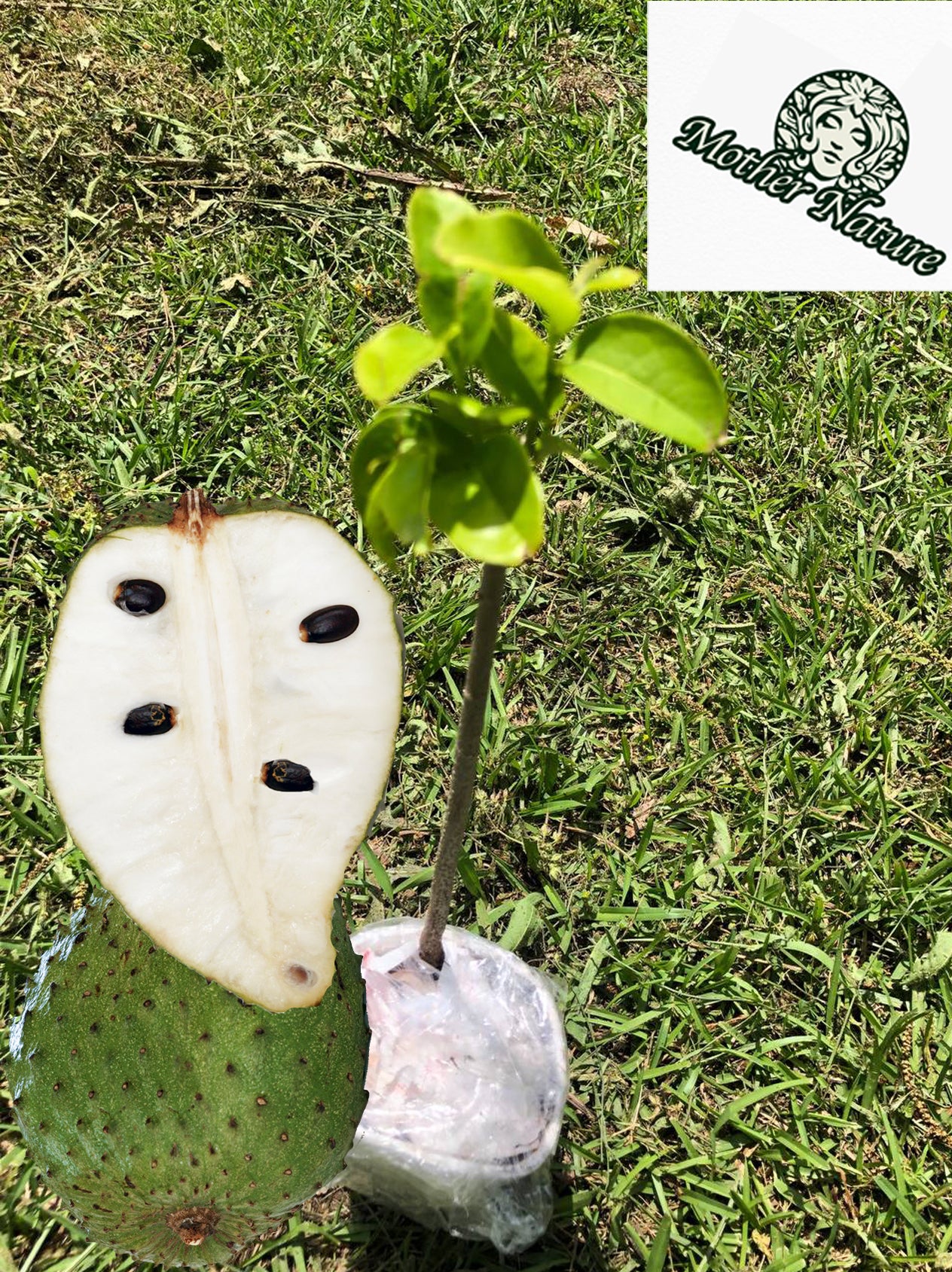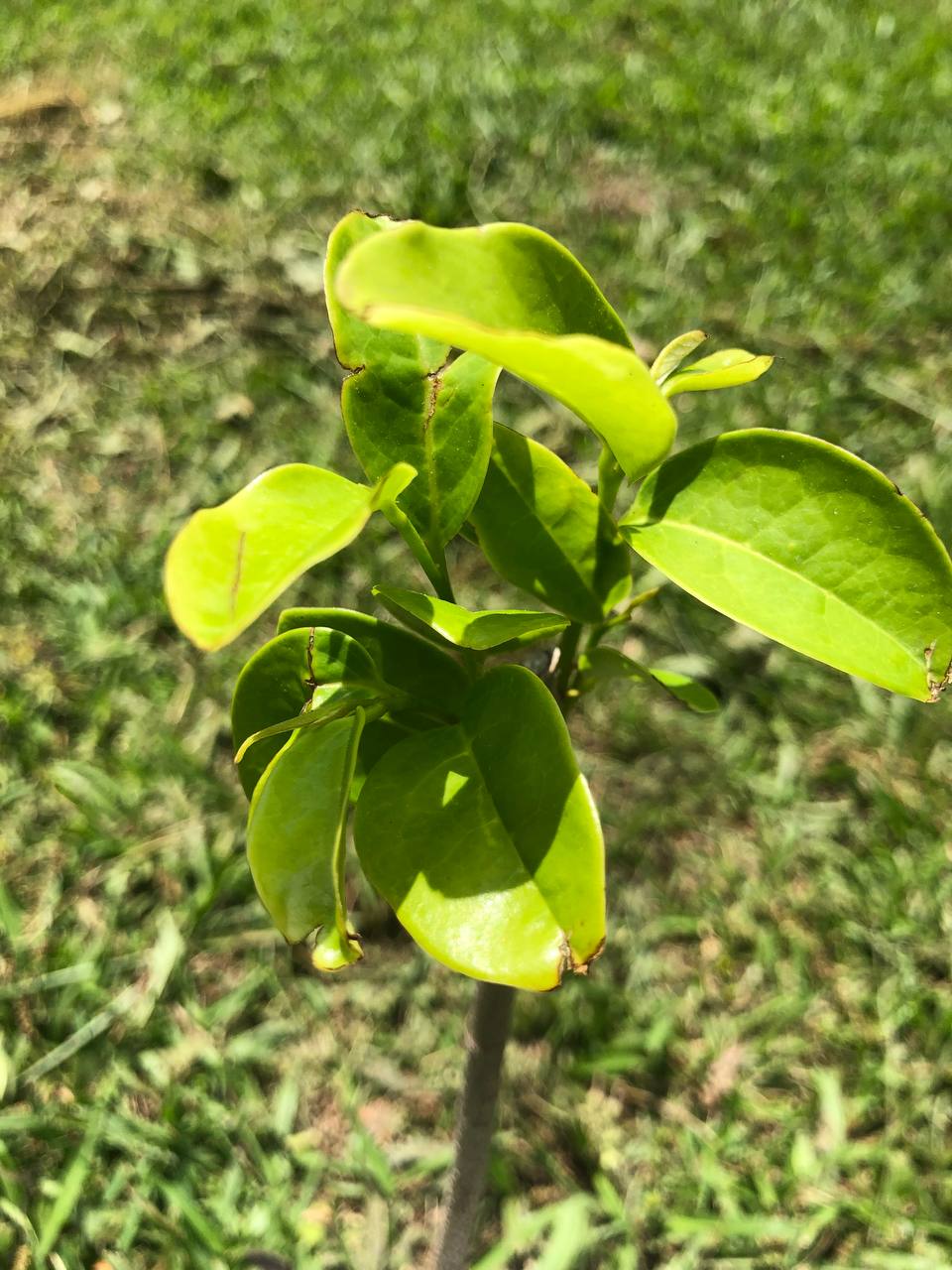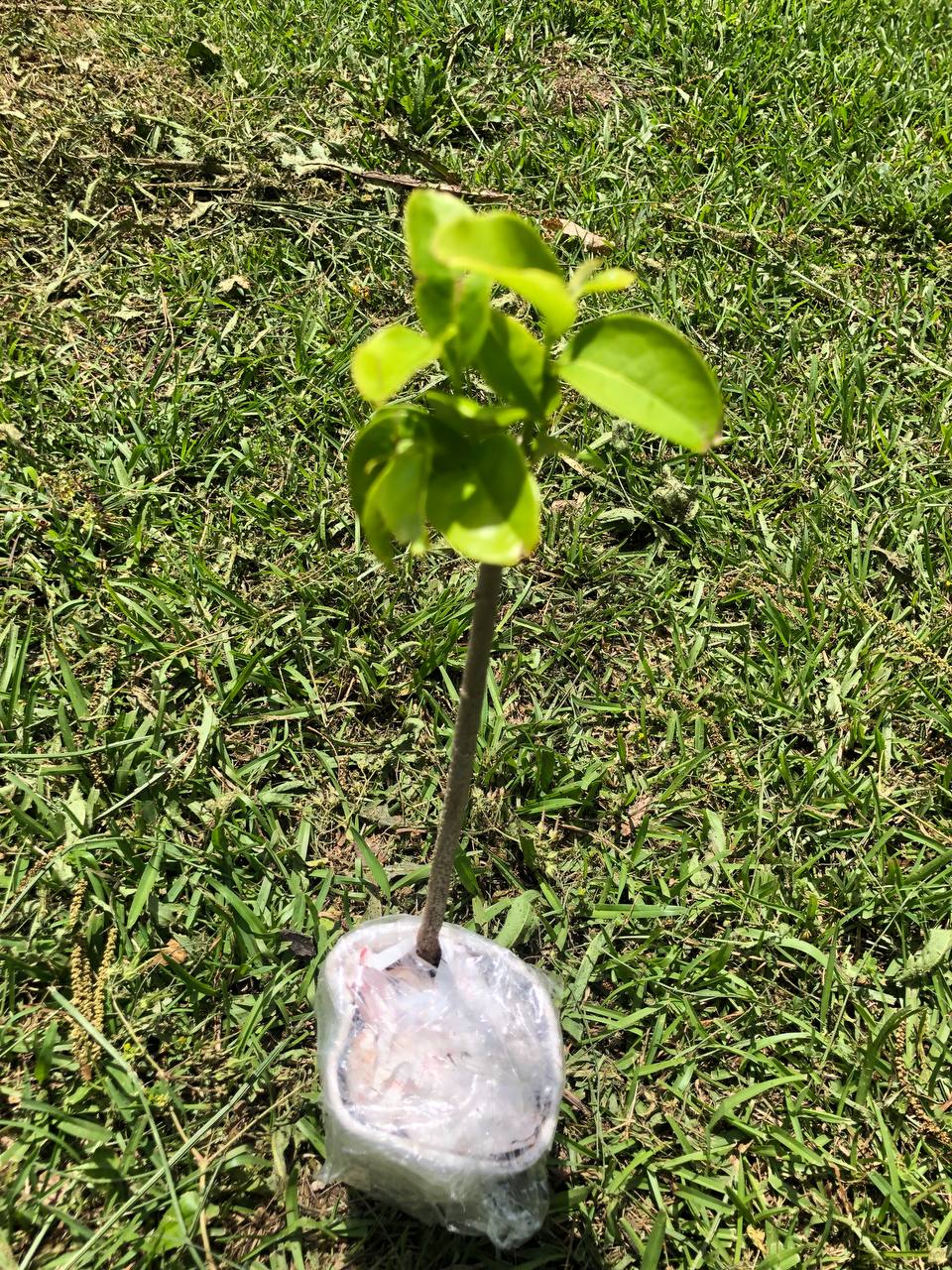Tropical Soursop Tree , Live Annona Muricata Soursop Plant Live - 3 to 10 Inch Tall
Tropical Soursop Tree , Live Annona Muricata Soursop Plant Live - 3 to 10 Inch Tall
Regular price
$9.99 USD
Regular price
Sale price
$9.99 USD
Unit price
per
Couldn't load pickup availability
Soursop tree will be either seedling, graphed, or cutting.
9.99 - seedling
14.99 - cutting
19.99 - graphed
The soursop tree (Annona muricata), also known as graviola, is a tropical fruit tree that offers a wide range of benefits due to its fruit, leaves, bark, and roots. These benefits span nutritional, medicinal, and environmental aspects. Here’s a detailed look:
Nutritional Benefits (Soursop Fruit)
Rich in Nutrients:
-
- High in vitamins C, B1, and B2, which boost immunity, energy production, and overall vitality.
- Contains minerals like potassium, magnesium, and iron, essential for heart and muscle health.High Antioxidant Content:
- Packed with antioxidants such as quercetin, tannins, and phenolic compounds that help combat oxidative stress and inflammation. Digestive Health:
- The fruit’s fiber content promotes healthy digestion and prevents constipation. Low in Calories:
- A nutrient-dense, low-calorie food ideal for weight management.
- The fruit’s fiber content promotes healthy digestion and prevents constipation. Low in Calories:
- Packed with antioxidants such as quercetin, tannins, and phenolic compounds that help combat oxidative stress and inflammation. Digestive Health:
Medicinal Benefits
-
Immune System Boost:
- The high vitamin C content supports a stronger immune response, aiding in fighting infections.
-
Antibacterial and Antimicrobial Properties:
- The leaves and bark have natural compounds that may combat harmful bacteria and pathogens.
-
Anti-Inflammatory Effects:
- Soursop leaves are known to reduce inflammation, which is beneficial for conditions like arthritis.
-
Potential Cancer-Fighting Properties:
- Studies suggest that acetogenins in soursop leaves may inhibit cancer cell growth in specific types of cancers, although more human research is needed.
-
Pain Relief:
- Traditional medicine uses soursop leaves to alleviate pain and inflammation.
-
Supports Sleep:
- The leaves are often used in teas to promote relaxation and improve sleep quality.
-
Lowers Blood Pressure:
- The fruit and leaves may help dilate blood vessels, supporting healthy blood pressure levels.
-
Blood Sugar Control:
- Some studies suggest soursop extract can help regulate blood sugar levels, which may benefit individuals with diabetes.
Environmental and Economic Benefits
-
Shade and Aesthetic Value:
- The soursop tree provides shade and enhances the beauty of tropical landscapes.
-
Erosion Control:
- Planting soursop trees can help stabilize soil and prevent erosion.
-
Sustainable Resource:
- The tree is a source of food, medicine, and natural products for local communities, supporting sustainable agriculture.
Culinary Uses
- The fruit is used in making juices, smoothies, desserts, and ice cream.
- Leaves can be brewed into tea for medicinal purposes.
- Seeds and other parts are used in traditional remedies in some cultures.
Cautions
- While soursop has numerous health benefits, consuming excessive amounts of its extracts (especially in non-traditional preparations) may cause side effects such as nerve toxicity in sensitive individuals. Always consult a healthcare provider before using it medicinally.How to grow:

Choose the Right Location | Zone 9-12 outdoors

- Climate: Soursop trees prefer warm, humid environments with temperatures between 70°F and 85°F (21°C–29°C). They are not frost-tolerant and cannot survive freezing temperatures.
- Sunlight: Select a location with full sun, as soursop trees require at least 6–8 hours of sunlight daily.
-
Space: Ensure there is enough space for the tree to grow. Mature trees can reach 15–30 feet (4.5–9 meters) in height and spread about 20 feet (6 meters) wide.
Watering
- Frequency: Water the tree regularly, especially during dry periods, to keep the soil consistently moist but not soggy.
- Young Trees: Require more frequent watering to establish their roots.
- Mature Trees: Once established, they are more drought-tolerant but still need deep watering during prolonged dry spells.
Fertilizing
- Use an organic, balanced fertilizer (e.g., 10-10-10 NPK) to promote healthy growth.
- Apply fertilizer every 2–3 months during the growing season.
- Add a layer of organic mulch around the base of the tree (but not touching the trunk) to retain moisture and regulate soil temperature.
Pruning
- Prune the tree annually to remove dead, damaged, or overcrowded branches.
- Shape the tree to maintain good airflow and sunlight penetration, which prevents fungal diseases.
Pest and Disease Management
- Common Pests: Monitor for aphids, mealybugs, and fruit flies. Use organic pest control methods like neem oil or insecticidal soap.
- Diseases: Prevent fungal diseases (e.g., anthracnose) by ensuring proper airflow, avoiding overwatering, and removing infected plant parts.
Harvesting
- Soursop fruit typically takes 3–5 years to develop after planting.
- The fruit is ready to harvest when it turns slightly soft, and its spines are more spread apart.
- Gently twist or cut the fruit from the tree.
Additional Tips
- Protect young trees from strong winds, as they have shallow roots and can be uprooted.
- If you live in a colder climate, grow the tree in a large pot so it can be moved indoors during winter.
 PH of Fruit 4.0 to 5.5 PH of Leaves 6.0 to 6.5
PH of Fruit 4.0 to 5.5 PH of Leaves 6.0 to 6.5 








